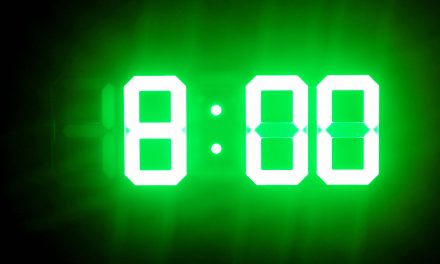By MaryLee Herrmann
SENIOR SIGN ISN’T JUST SOME BLANK SCREEN WITH A LINE AT THE BOTTOM!
Was I screaming there? Sorry, I’m not incredibly tech savvy. So if that was a scream, know that I was simply responding in kind to someone who sent an email regarding an article I’d written about Senior Sign (a Foresight partner). The email included the following (caps are from the original):
Paperless only works if you can also provide the paper — as any contract lawyer will tell you. Clients still retain the right to see the document, that all spaces are filled in, and to sign that document that sits before them — NOT JUST SOME BLANK SCREEN WITH A LINE AT THE BOTTOM! One educated patient can snarl up an entire morning unless you can whip out the paper version of a document, that they can see and sign.
Get with it, folks.
She’s not a contract lawyer; however, my former communication professor at the University of Dayton, Teri Thompson — who often spoke of the impact writing can have — would be proud, because as far as I know, this is the biggest reaction elicited from anything I’ve ever written.
Eliminates the Hassle
When I first saw the email above, I was worried I’d done something wrong. (I am currently hauling around nonfiction books, not an e-reader, on the subjects of “overthinking” and “guilt complex” in my backpack.) However, I quickly learned that this person’s message has more to do with their knowledge, or lack of knowledge, of the awesome product Senior Sign has designed, which eliminates the hassle of move-in paperwork with e-signature software developed specifically for senior living.
And I get it. Just as I prefer the palpable experience of holding an actual book, some people like to physically hold those sheets of paper they are reading and signing. And there are legalities to consider when signing any type of paperwork, whether printed or electronic.
It Really Is Legal
So perhaps I didn’t do anything wrong, but maybe I didn’t explain their product very well in the article. (Reread that “overthinking” thing above.) After all, the ins and outs of “electronic signature,” such as what is legally binding and what document signing methods are more on the lines of “iffy” or nonbinding, can be confusing, even though the E-Sign Act has been around since 2000. Yup, the whole electronic signature thing has been around for 22 years.
Did you know that? I DIDN’T. Oops, I mean, “I didn’t.”
I learned that cool tidbit from Neil Krauss and Jared Hancock, both of Senior Sign, the “more people, less paper” people, when they spoke with our own Steve Moran to clear up any confusion.
The Highlights
In the video:
- Neil explains the specifics of using Senior Sign (hint: it’s not some blank screen with a line at the bottom) and how it allows any user to conveniently print from the online file (no snarling, no whipping out) for anyone wishing in-hand paperwork. And the team at Senior Sign develops their programs with knowledge of and compliance with all legal matters, so senior living communities can utilize the software with confidence.
- Jared discusses the audit trail Senior Sign software provides, including timestamps, user identification, and computer verification.
- Spoiler alert: Jared shares a story of how one marketing department head said he was being a bit bamboozled in the paperwork (the tons of sheets of paper) by some of their incoming residents because they would … well, you’ll have to watch the video to find out!
Check out the video, and then reach out to Neil and Jared at Senior Sign. I mean it, you really should, they are such nice guys! After all, they let me write another article!








